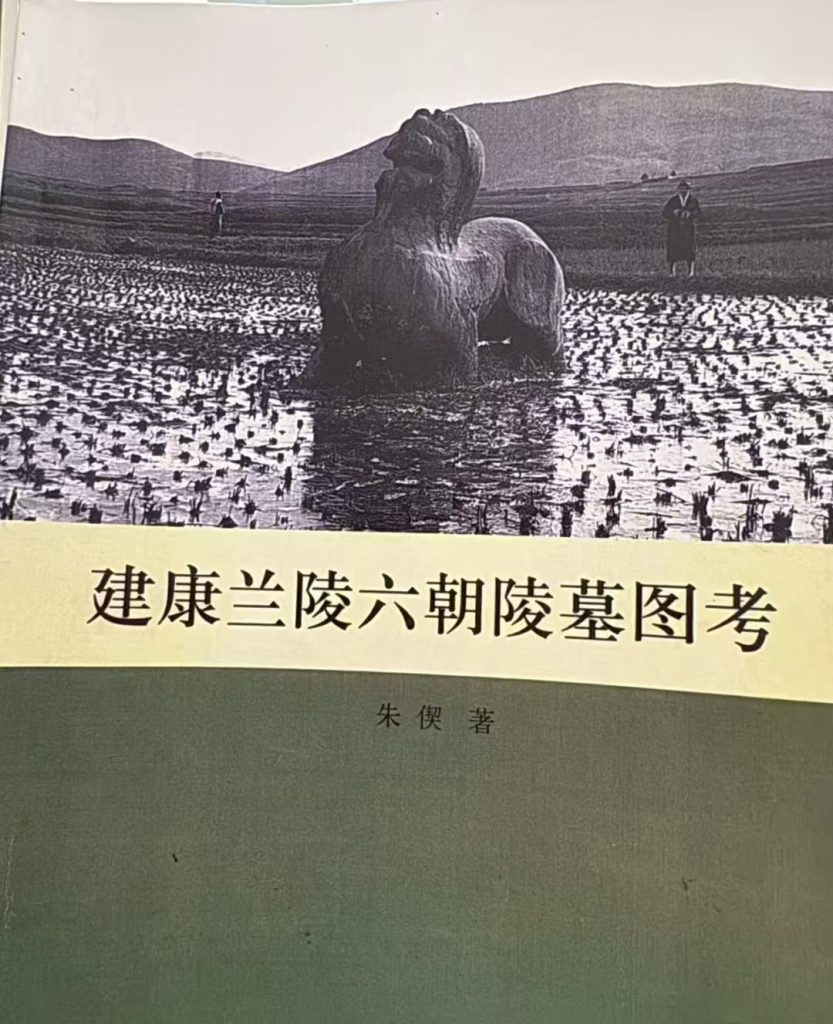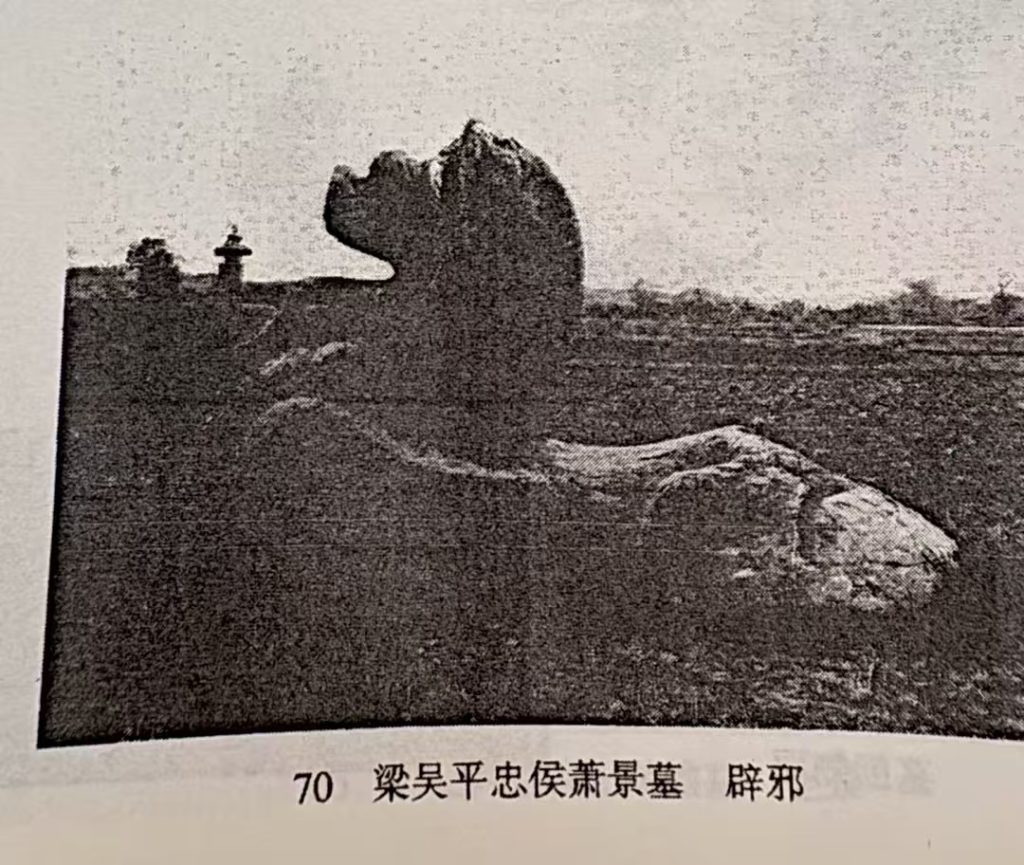Xiao Jing (477–523), cousin to Emperor Wu of Liang and noble Marquis of Wuping County, played a vital role in founding the Liang Dynasty. Though his title was modest, his tomb’s stone carvings are anything but. According to Zhu Xie, who meticulously documented these relics in An Investigation of Six Dynasties Tombs in Jiankang and Lanling, the site once featured two stone beasts (bixie) and a huabiao (ornamental stone pillar). Today, only one bixie and the huabiao remain, as the other bixie suffered severe damage and was buried onsite to preserve what’s left.

Mr. Zhu Xie conducted field investigations and research on these stone carvings and authored An Investigation of Six Dynasties Tombs in Jiankang and Lanling.
The surviving bixie stands proudly in the open fields—strong, majestic, and intricately patterned. Fun fact: this very bixie inspired the emblem of modern Nanjing. Facing it is the huabiao, consisting of a base, column, stele, round top, and a small bixie. Its column sports vertical, diamond-shaped carvings remarkably similar to those found on ancient Greek temples. This detail hints at a fascinating cultural exchange between East and West, possibly linked to the Silk Road or maritime trade routes.

The fusion of Greek sculptural techniques and Buddhist art likely arrived in China gradually. The Liang Dynasty, under Emperor Wu’s Buddhist devotion, naturally saw such architectural influences on royal tombs. Historical anecdotes even tell of Bodhidharma’s voyage from India to Guangzhou, and his famed Zen dialogue with Emperor Wu in Nanjing—a perfect example of East meeting West.
Exploring Xiao Jing’s tomb with drones and 3D technology under the scorching 110°F summer sun, we connected ancient artistry with modern methods—preserving history without melting in the process.
